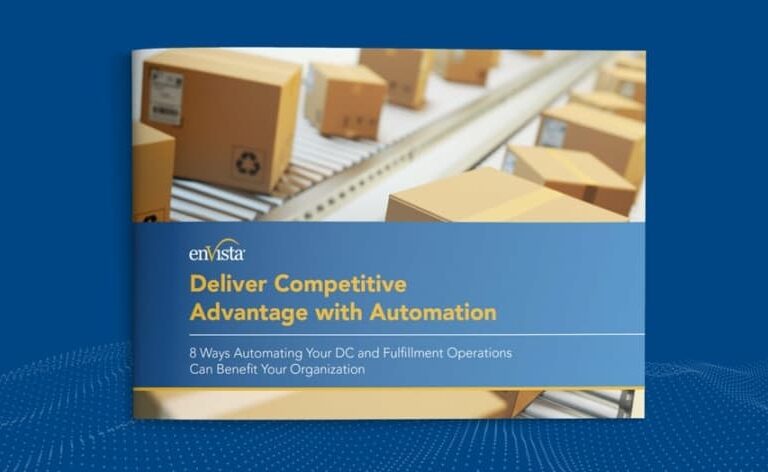The modern supply chain is vastly different today than it was a decade ago. Driven by customer behavior, which has evolved significantly due to factors like the Amazon effect, it has become increasingly data-driven, resilient and reliant on technology like robotics, warehouse execution software and the Internet of Things. This has not only changed the customer-facing aspect of the supply chain, but it has also altered the inner workings of the warehouse. The evolution of technology is entering the warehouse floor.
Testing has always been crucial in the supply chain, whether testing a highly manual process or a complex software system. Today, it has become apparent that simple manual testing is not enough; test automation is key to modern supply chains.
The introduction of technology in the warehouse has given rise to the question of how to go live efficiently, maintain up-time and ensure that the new technology entering the warehouse is providing the highest value and return on investment. Test automation has introduced itself as the answer.
Test automation uses software tools to automatically execute predefined test cases on a system, application or process, ensuring it aligns to meet business requirements.
Where Does Automated Testing Come In?
Even though technology has pervaded our personal and professional spaces, change avoidance continues to persist, especially in today’s warehouse. Big hardware and software upgrades can be expensive, time-consuming and difficult, leading warehouse leaders at times to avoid them altogether. But what if this didn’t have to be the case?
Warehouse technology has evolved past the ability to be efficiently tested in a manual capacity. The combination of hardware, like collaborative robotics, conveyors, racking and more – and software, like warehouse management systems and warehouse execution systems – in the warehouse adds many more layers of testing to the process. Automated testing can maintain the flow of data between these systems, not just ensuring that they are operating correctly, but that they are collaborating correctly as well. It will answer the question, “is my warehouse control system receiving the message it is supposed to?” The ultimate result here is protection of your organization’s data integrity.
Benefits of Automated Testing
Automated testing is a powerful tool for helping warehouse leaders overcome reticence to change. A manual testing phase can take up to twice as long as the developmental work, making some upgrades last as much as five to seven years. Automated testing can reduce the testing phase by an average of 50 percent – reducing the total project timeline by anywhere from 10 to 30 percent, according to Cycle Labs.
There are many other benefits to leveraging automated testing in your facility:
Resilience
At the rate the modern supply chain is evolving, creating resilience in your operations is not optional. Testing has long been a roadblock to resilience. But what if facility leaders didn’t have to be afraid of change in their supply chains? Automated testing enables delivery teams to deliver faster and allows for swifter upgrades in the supply chain when they’re needed.
Comprehensive Test Scenarios
Certain actions in the warehouse are not conducive to manual testing, such as when two putaway drivers are sent to the same location at the same time. While these scenarios are hard to test manually, automated testing can do performance, load and stress tests, moving your solution forward much more efficiently.
Employee Satisfaction
When it comes to warehouse software and systems, the ‘customer’ is the user on the warehouse floor. Automated testing can test the quality of both the system and the customer experience, removing deadlocks and lags and ultimately improving the employee experience. Performing automated testing prior to User Acceptance Testing (UAT) will dramatically improve your UAT experience and results.
Competitive Advantage
Manual testing often puts warehouse leaders on defense. Automated testing flips the script, not just identifying the negative, but validating the positive. This allows you to adapt, modify and offer new services before your competition. For example, automated testing allows a load test up to 200-300 percent prior to peak season. With this testing information, you can better prepare your people, processes and technology for a profitable peak.
Technical Debt Reduction
Inventory movement is a key area of testing. Manual testing often creates bandages for one-off scenarios, rather than fixing the problem at the root. This only increases your technical debt and further complicates the upgrade path. Automated testing, however, more thoroughly tests scenarios on the warehouse floor, offering sustainable solutions and simplifying the upgrade path.
Conclusion
The short- and long-term benefits of automated testing far outweigh those of manual testing in the supply chain. Supply chain leaders can experience further value by leveraging an automated testing software provider alongside a third-party consultant to receive Testing as a Service (TaaS). enVista and Cycle Labs work together to provide warehouse leaders with the combined power of Cycle Labs’ cutting-edge automated testing software and enVista’s proven implementation methodologies.
Learn more about automated TaaS, see it in action and hear customer success stories in our recent webinar.






